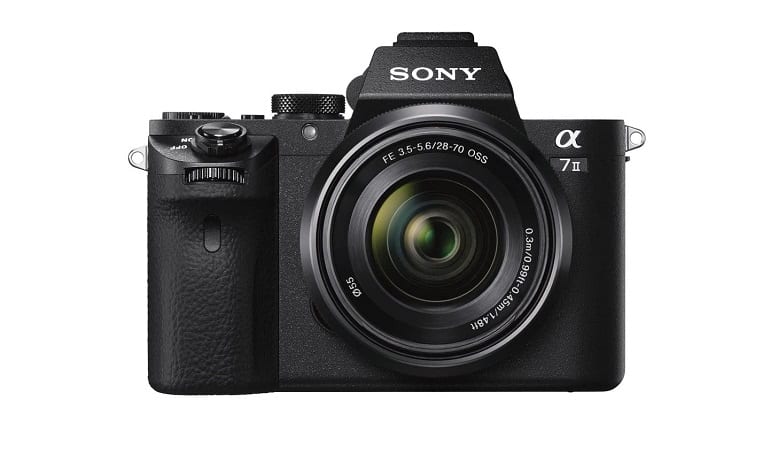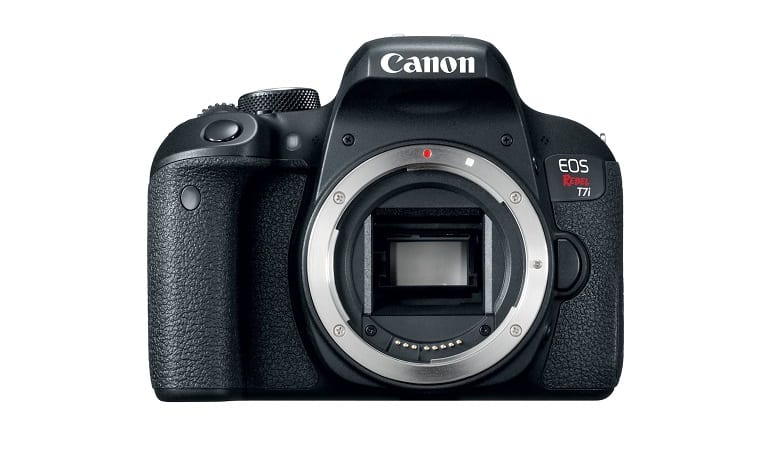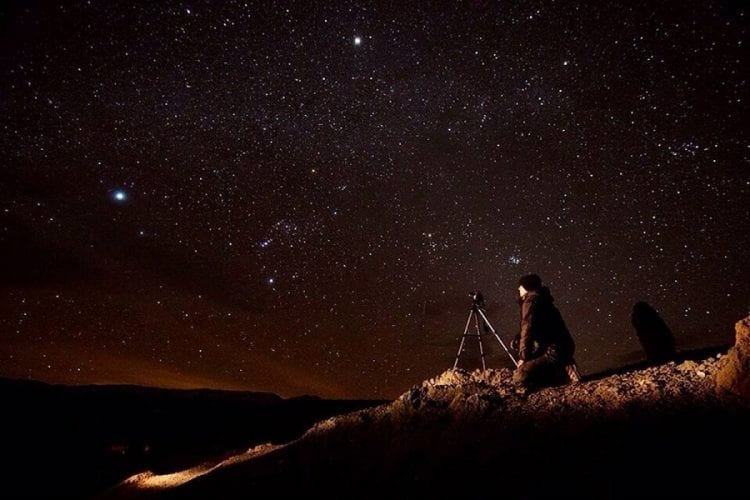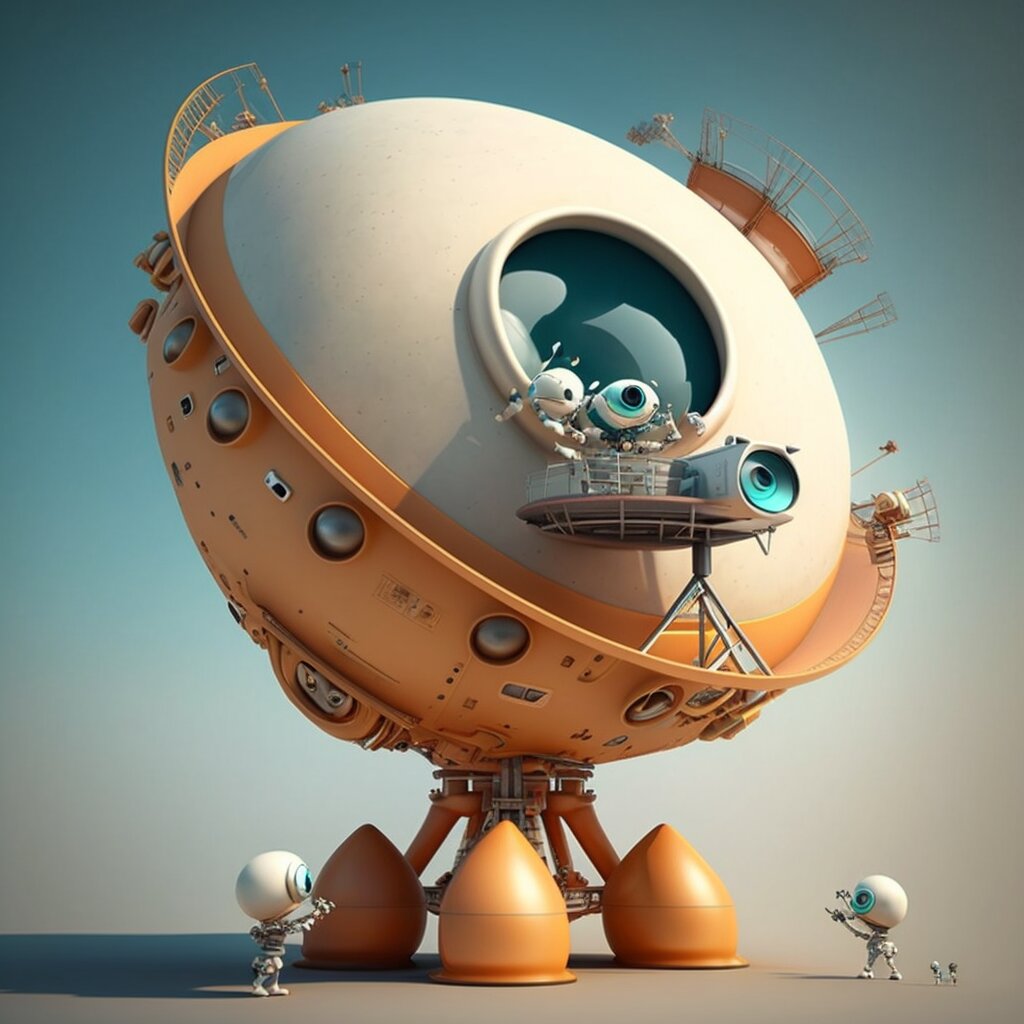You want to take stunning photos of astronomy from your backyard or ideal stargazing locations that you’ve found in your area, but can you just use any camera?
No, your camera should tick all the right boxes so that your star images come to life.
What are some important features to look for in a camera?
To take good shots of the night sky, you want to ensure the camera’s shutter speed, dynamic range, ISO, and more are all at the right setting.
If that already sounds confusing, don’t worry. Here’s our guide to the best camera for astrophotography.
What makes these five cameras the best ones for astrophotography?
Let’s see by checking them out in greater detail. We’ll start with the one that makes the number-one spot on our list.
Best Camera For Astrophotography – Reviews & Buying guide for 2020
Best Overall: Sony a7R III Mirrorless Camera

Mirrorless cameras are good for taking pictures of the stars and other celestial objects because of how fast they work. The fact that they don’t contain a mirror makes it easier for them to take several images in a row.
This best mirrorless camera for astrophotography from Sony has many features that make it a top contender if you want to take professional astrophotography.
Featured specs
- BIONZ X processing engine
- Back-illuminated sensor
- Pixel Shift Multi Shooting
Benefits
- This camera allows you to shoot high-speed subjects with accurate and continuous AF/AE tracking.
- When taking pictures of the dark sky, you want to be sure your camera has enough light so that you can see the celestial objects you want to photograph. This Sony camera has a back-illuminated sensor with a lens that collects a large quantity of light.
- You’ll be able to process your images faster, thanks to the BIONZ X processing engine.
- It’s also got a SuperSpeed USB 3.1 Gen 1 that enables remote high-speed data transfer. This makes handling your large RAW files much easier.
- This mirrorless camera has a Touch Focus function as well as a Touch Pad function. This means you can quickly and conveniently drag the focus frame while using the camera’s viewfinder.
- You can better track objects by setting the frame rate of the viewfinder to 120/100fps.
- This camera has a CMOS sensor which has some advantages over a CCD sensor, such as that it ensures longer battery life for your camera.
- This camera has a Pixel Shift Multi Shooting feature that allows you to shoot images that are rich in color, texture, and resolution.
Drawbacks
- Some people who have purchased this camera have reported that it’s not resistant to scratches, so you’ll have to ensure you protect it with the use of a screen protector.
- Others have reported that the menu system is quite dense.
Extra Features
- When taking pictures of celestial objects it’s good for the images to be in RAW format. RAW format doesn’t compress information so that you can produce images that are of a higher quality. That said, this mirrorless camera has various image quality modes available, such as RAW, JPEG and JPEG Extra Fine.
- With your purchase of this camera, you’ll receive the following items: power cord, cable protector, charger, shoulder strap, body/shoe caps, and an eyepiece cup.
Buying Advice
If you’re looking for a camera that will take beautiful pictures of astronomy by a brand you can trust, then this one is worth considering.
Runner Up: Canon EOS Ra Astrophotography Mirrorless Camera

Canon is a leading brand when it comes to cameras fit for astrophotography. This mirrorless camera is the first full-frame camera that’s dedicated to the art of astrophotography. Let’s check out its features that will help you to take the best pictures possible of the starry sky.
Featured specs
- 30x magnification
- Lens control ring
- Full-frame sensor
Benefits
- This camera has 30.3 million pixels and 30x magnification that enables you to take exceptional details of celestial objects through the viewfinder or LCD screen when using Live View mode.
- It comes with an RF mount that’s suitable for use with both RF lenses and EF/EF-S lenses.
- If you’re interested in taking pictures of nebulae, this camera is the best one for the money. It’s got an enhanced infrared-cutting filter that allows a high transmission of hydrogen alpha rays at a wavelength of 656nm. This is around four times more than what you’d find in a standard EOS R camera and it enables you to take amazing pictures that show off the red hues of nebulae without needing other camera accessories.
- It comes with a full-frame sensor. This means you can enjoy wide angles in your photography and also make use of a variety of lenses, which is what you want in the best Canon camera for astrophotography.
- The camera offers long-exposure battery life that’s up to seven hours with a battery that’s fully charged. This is perfect if you’re in the great outdoors trying to get a perfect shot of the Milky Way or other celestial object.
Drawbacks
- The camera has only one SD card slot.
- While it boasts having 30 megapixels, this is considered to be average, and this is where the Canon camera lags behind the Sony camera that’s in our number-one spot.
Extra Features
- One of the things you’ll love about this camera is its lens control ring. It’s easy to find in the darkness so you won’t have to worry about fussing with dials and buttons.
Buying Advice
This Canon camera is a game changer because it’s a dedicated camera to use for astrophotography, so it’s packed with all the important features you need to take the best shots of the night sky.
Alternative: Sony Alpha a7 IIK Mirrorless Camera

This camera is a step up from the company’s a7 design as it’s had various elements redesigned. These include its shutter and command dials. Let’s check out all its important features you need to know about if you want to use this camera for astrophotography.
Featured specs
- 5-axis image stabilization
- Wide ISO range
- E-mount lens system
Benefits
- This is a camera that has in-body 5-axis image stabilization. What this means is that it prevents your images from looking blurry. If you’ve ever battled with that dreaded camera shake (and who hasn’t?), this feature will help you to prevent it in future.
- Best of all, the stabilization has been incorporated into the camera’s body. This means that if you’re using a mounted lens it will be able to make use of the feature, for both videos and images.
- You’ll be able to take beautiful images, thanks to the work of features such as a 24.3MP resolution, a sensor range of ISO 100 to 25600, and a 35mm full-frame sensor.
- The camera is really easy to use, thanks to how it’s got good grip and its rear as well as front facing control dials have been made smaller so that you don’t have to worry about pressing them accidentally.
- It’s equipped with a BIONZ X image processor that lets you engage in 5fps high-speed shooting that’s continuous.
Drawbacks
- Some people who have purchased this camera have reported that it has a short battery life.
- When you use a zoom lens that’s not a Sony one, achieving a steady shot doesn’t work as well.
- The autofocus feature on this camera is not of a high quality.
Extra Features
- The E-mount lens system is especially great for taking videos, as it has smooth focusing and zoom control features.
- The camera’s viewfinder will show you what you can expect in your recording, such as what effects your camera settings will have so that you can make the correct adjustments to get the results you want.
- The camera comes with extra items included with your purchase, such as a rechargeable battery, AC adaptor, body cap, shoulder strap, eyepiece cup, accessory shoe cap, and micro USB cable.
Buying Advice
It’s a really solid entry-level full-frame camera to own with some great features to boost the quality of your astrophotography images. But, if you’re a beginner, then maybe the next product is more suitable for you.
Best Beginner Camera For Astrophotography: Canon EOS REBEL T7i Body

This camera has professional but easy-to-use features, so you’ll get beginner benefits while being able to produce quality images.
Featured specs
- Digic 7 Processor
- CMOS sensor
- Feature assistant
Benefits
- This camera has built-in Wi-Fi, Bluetooth, and NFC.
- It’s got fast processing and autofocus speeds, giving you the chance to take up to 6.0 frames every second.
- Focusing is easy – simply touch the part of the image that you want to focus for a clearer and sharper image.
- You want to shoot pictures of the night sky when it’s really dark and now you can, thanks to the camera’s ISO range that’s between 100 and 25600.
- It’s got a 24.2 megapixel CMOS (APS-C) sensor and DIGIC 7 processor so that you get bright, colorful, and detailed images.
Drawbacks
- People have reported that this camera’s battery life is poor.
- Others have mentioned that the microphone doesn’t work as well as it should. While that isn’t necessarily something you will need for astrophotography, it’s worth knowing about.
- This camera is quite large when compared to competitors.
Extra Features
- This camera makes it easy for you to see what you’re going to shoot, thanks to its 3-inch Vari-angle touchscreen LCD.
- There’s a feature assistant on board to help you if you get stuck, which is a fantastic feature for beginners.
- You can use this camera with a range of Canon’s EF and EF-S lenses. These include macro, telephoto, and wide-angle lenses.
Buying Advice
It’s the best cheap camera for astrophotography option for you if you want a solid, trustworthy camera to take with you when you go stargazing.
Best Out Of The Box Camera: Kodak PIXPRO Astro Zoom Camera

While this camera’s equipped with some cool features that you probably won’t really need for astrophotography (like a face beautifier mode), there are some features that you’ll definitely be grateful for when you’re under the night sky. Let’s check them out.
Featured specs
- 42x optical zoom
- CCD sensor
- Li-on battery
Benefits
- This camera’s got 42x optical zoom. When combined with its 24mm wide-angle lens, this helps you to get closer to what you’re photographing and also fit more of your subject into your frame.
- It’s got panorama mode that you’ll enjoy using because it produces a smooth panoramic picture to 180 degrees. This means you can pan across the celestial body you want to photograph.
- You don’t want your images to experience a drop in quality when you zoom into them, and this camera prevents that from happening because it has a CCD sensor to reduce noise.
- If image stabilization during your astrophotography sessions is a problem, the camera’s Optical Image Stabilization feature will help to reduce vibrations and shakiness.
- You can open the aperture by up to f/3.0 to collect a lot of light so that your images remain sharp and bright.
Drawbacks
- This camera doesn’t come with a view finder, which is quite disappointing.
- People have complained about producing blurry images with this camera so it’s a good idea to use it with a tripod to prevent foggy images.
Extra Features
- This best digital camera for astrophotography performs really well when it comes to battery life. You don’t want to run out of battery when you’re out there trying to get the perfect shot of the Milky Way galaxy or other celestial object, after all. This camera boasts a Li-Ion battery that’s rechargeable and eco-friendly. It also discharges slower than other types of batteries so it won’t let you down.
Buying Advice
If you don’t want to spend a lot of money on a camera, this one’s a good purchase. Not only does it have features that will benefit you when you take pictures of the stars but it’s also got features that you’ll enjoy for other types of photography. It’s the best CCD camera for astrophotography.
Astrophotography Camera FAQ
You might have some questions about astrophotography cameras, like what features are most important to have and what type of camera is best for taking pictures of the sky. Here’s what you need to know.
How many megapixels do you need for astrophotography?

When it comes to megapixels, it’s good to bear in mind that if you have a camera with larger pixels this will make it more sensitive to light, and that’s obviously a good thing. It will also have better signal-to-noise, as Sky and Telescope reports.
However, before you rush out and purchase a camera that has the highest megapixels, there is a case to be made for lower megapixels.
When you’re taking pictures of deep-sky objects, having a camera with a short focal length, a small aperture, and smaller pixels can work well. This is because the fast focal ratio will transmit more light to the smaller pixels, the website goes on to explain.
When taking pictures of the stars, an average amount of pixels you’ll need is between 2.5 and 2.8 pixels. Having more than that won’t increase the details you can see in the images but it will transmit more light and decrease the signal-to-noise ratio, as Diffraction reports.
What’s an average amount of megapixels you should look for in a camera?

When it comes to megapixels, you might wonder how many are really necessary. You need to consider what you intend to do with your images. For example, if you want to print them you’ll need more megapixels to ensure that they don’t look grainy.
On average, you’ll get a clear and sharp photo print by having 300 pixels per inch. That means that printing an 8×10 photo will need 8x300x10x300, which will give you 7.2 megapixels, as Clark Vision explains.
A camera needs, on average, between 10 and 20 megapixels as this is more than sufficient for your photography needs.
It’s worth bearing in mind that another reason why you don’t always need a camera with the largest amount of megapixels is because of how technology is changing and improving.
Advanced DSLR and mirrorless cameras have large sensors and this means that a camera that’s eight megapixels will be able to create a higher-quality image as compared to a different type of camera with the same amount.
Look for other camera features as they’re more important than the amount of megapixels in a camera.
What should I look for in an astrophotography camera?

A camera is not only about its megapixels! Here’s a rundown of the most important things to look for when purchasing a camera for astrophotography.
- Aperture Size. You want a decent aperture size because this means that it will collect more light so that it can enter the camera lens. Look for a camera that has an aperture of at least f/2.8.
- Shutter Speed. The longer the camera’s shutter can stay open, the better as this will encourage more light and capture the slow movements of celestial objects in the sky.
- Full-Frame Sensor. If possible, it’s a smart idea to purchase a camera that has a full-frame sensor as this is ideal for astrophotography. The reason for this is because it will collect more light due the sensor’s large size. An example of a full-frame camera is the Sony Alpha a7 IIK E-mount interchangeable lens mirrorless camera that we featured in our list of reviews.
- Sensor Type. You want a CCD or CMOS sensor to capture deep-sky objects much better since they’re really far away from you. A CCD sensor, like the one found in the Kodak PIXPRO Astro Zoom camera that we reviewed, will excel when it comes to taking long-exposure pictures. As a bonus, CCD sensors are usually much more sensitive to light than what you’ll find in a DSLR camera.
- Live View Mode. This feature should be available on your camera as it allows you to preview your images before you take your shots, which can save you a lot of time.
- Small And Compact. You want to ensure that the camera you use is easy to handle and carry around, especially if you want to transport it to various stargazing locations out of the city. There are many small and compact astrophotography cameras that we featured in our guide, such as the Kodak PIXPRO Astro Zoom camera that has dimensions of 3.32 x 4.44 x 3.21 inches and is really convenient to pack and transport.
- Image Stabilization. You don’t want your images to look unfocused, so investing in a camera that offers image stabilization features is always a good choice to allow you to create sharper, cleaner pictures.
Is full frame better for astrophotography?
People often debate whether it’s better to use full-frame or crop camera sensors for astrophotography.
While there’s no clear-cut answer because both have their advantages, many people insist that full frame can be very beneficial for your astrophotography hobby. Here’s why.
- Full frame gives you wider fields of view so you can see more, and when you can see more of the Milky Way galaxy or other large celestial body this will improve how well you can capture it.
- Full frame sensors produce high-quality images. Although full-frame and APS-C cameras have almost the same resolution, because full-frame sensors are much larger this increases the size of individual pixels and this ensures better quality images when you use higher ISO, as TechRadar reports.
- Full frame cameras work well when taking pictures in low-light situations. This is because they tend to have bigger pixels that will collect more photons, resulting in an image that’s got less noise and is cleaner as well as sharper.
- Full-frame cameras have more dynamic range. Again, this is as a result of the fact that they have bigger pixels. Dynamic range is important because it refers to the ratio that exists between the minimum and maximum measurable light intensities, as Cambridge in Color reports. Since they can boost the dynamic range, this makes full-frame cameras perform well when it comes to displaying the full brightness of the photo you’re taking when there are very dark shadows in it.
There are some potential downsides of full-frame cameras to know about. These include how these cameras tend to be large and bulky, as well as more expensive than crop-sensor cameras.
There’s also the issue of how full-frame cameras have larger sensors that require the camera’s memory card to store more data so it takes longer to save pictures onto this card and that can cause you to be able to take fewer frames every second in “burst mode.”
However, for astrophotography you’ll want to use long-exposure photography, so this “issue” of full-frame cameras could actually work in your favor!
Should I buy a DSLR or mirrorless?
This is another important question you’ll need to answer when choosing a camera. DSLR and mirrorless cameras are both popular for astrophotography.
They both have interchangeable lenses and you can choose from a variety of models, whether you’re a beginner or professional. They both also have large sensors so that they can collect a lot of light and provide detailed images.
That said, it’s important to be aware of both of their pros and cons so that you can find the one that’s best for you.
DSLR camera
Pros
- DSLR cameras have optical viewfinders so that you can plan the perfect shot.
- They have fast autofocus features.
- They have a larger variety of accessories and lenses that are compatible with them, which makes them versatile and can also increase their lifespan.
Cons
- DSLRs can be a bit heavy and bulky, which doesn’t always make them feel practical.
- They can be expensive, which can be an obstacle when purchasing them especially if you’re a beginner or on a budget.
- They tend to have slower continuous shooting ability.
Mirrorless camera
Pros
- These cameras usually have electronic viewfinders so you can view your scene and feel more secure about getting a fantastic picture.
- They’re lighter and more compact than DSLR cameras, so they’re easier to carry around.
- They don’t cost as much as DSLR cameras.
Cons
- Some mirrorless cameras don’t have quick-access buttons or dials.
- They have fewer options than DSLR cameras when it comes to accessories and lenses that you can use on them.
- They tend to have a shorter battery life than what you’ll find in DSLR cameras.
Does the brand matter what about lenses?

When it comes to camera brands, you might wonder if you should stick to certain brands over others. The three leaders of mirrorless and DSLR cameras are Nikon, Sony, and Canon.
The important thing you need to bear in mind when choosing a camera for astrophotography is that some brands now have cameras that are specifically built for taking pictures of celestial bodies. These include the EOS Ra astrophotography mirrorless camera from Canon that we featured in our reviews.
It’s good to remember that the brand of camera you choose will usually also influence the accessories you’ll be able to use with it. For example, you might find that the camera you’ve chosen will only be compatible with accessories that are made by the same brand.
When it comes to lenses, the brand you choose to use usually doesn’t matter. There are lots of brands that make quality lenses. These include Canon, Nikon, and Sigma, which is great for third-party lenses that are compatible with various camera brands.
Lenses are also interchangeable so the camera you own will usually be able to use a bunch of different lenses that are of different brands and types, such as macro and wide-angle lenses, for example.
However, it’s worth bearing in mind that you might not always be able to fit every lens you want to buy onto your camera.
You therefore need to think ahead when purchasing a camera and ask yourself what lenses you’d like to use on your camera so that you’ll be able to use the ones that are compatible with it.
Although brands don’t matter, it’s clear to see that you need to consider the brand of lens and camera you want to ensure they’re compatible. This enables you to own a camera that will be versatile for your various astrophotography needs and bring you joy for a long time.
Conclusion
Taking stunning pictures of the night sky becomes much more possible if you’re equipped with the right kind of camera. In this article, we’ve featured five of the best cameras for astrophotography to purchase if you’re serious about capturing breath-taking images of what you see.
We’ve also provided you with more information you need when it comes to choosing the best camera for your craft. It’s worth choosing a quality camera that you love and that you can grow with in future, such as by being able to fit a variety of accessories onto it.









